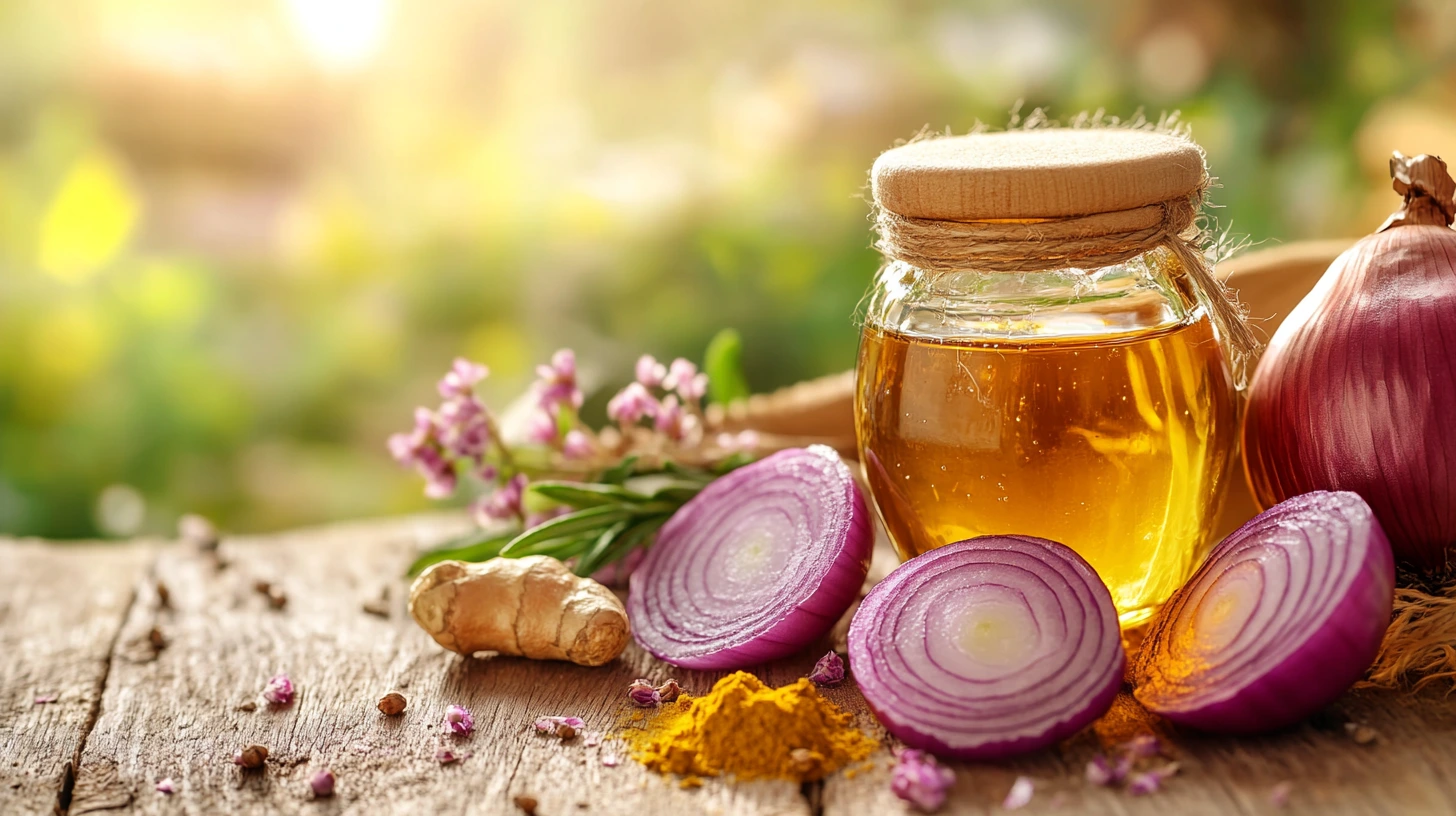Onion Boil can be painful, unsightly, and incredibly frustrating. These swollen, pus-filled bumps often appear when hair follicles or oil glands become infected with bacteria. While conventional treatments like antibiotics and warm compresses are often recommended, nature offers some surprisingly effective solutions. One such remedy that has stood the test of time is the onion.
That’s right — the humble onion isn’t just for soups and stews. It’s a powerhouse of antibacterial, anti-inflammatory, and antiseptic properties that can work wonders on skin infections, especially boils. From ancient civilizations to modern holistic healers, onion has been used as a go-to remedy for skin issues, and there’s plenty of science to back it up.
In this comprehensive guide, we’ll explore how onion helps treat boils, the many benefits it provides, and several easy methods you can try at home. Whether you’re dealing with a stubborn boil or looking for natural skincare tips, this article will give you everything you need to know about onion boil remedies — and how they actually work.
Let’s dive into the root of the problem and peel back the layers on this natural cure.
Boils can be painful, frustrating, and persistent — but nature may offer an effective alternative: the onion. Often used in culinary delights like Tacos de Lengua, onions also possess medicinal qualities that can naturally fight skin infections like boils.
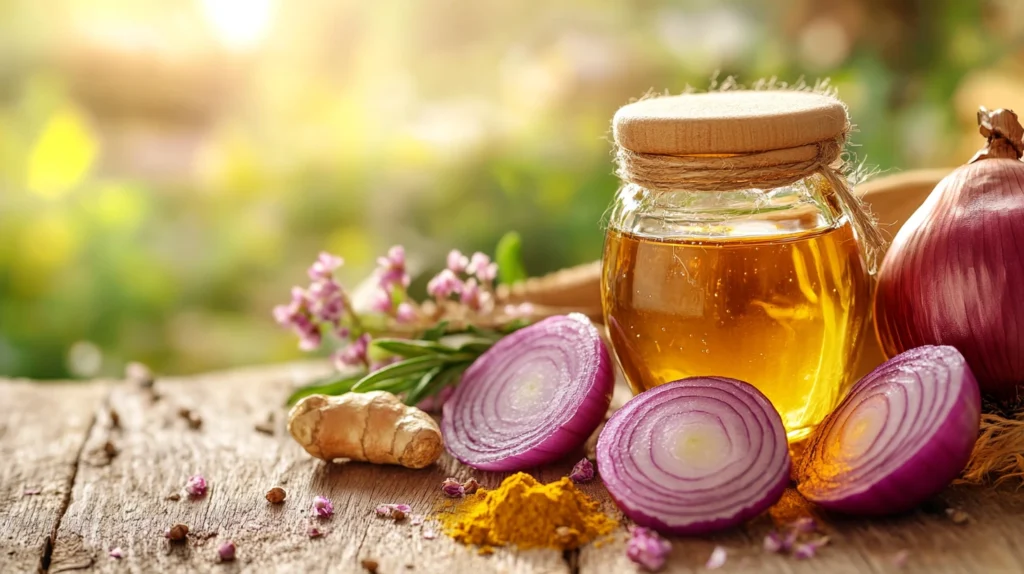
Understanding Onion Boils
What Is a Boil?
A boil, also known as a furuncle, is a skin infection that begins in a hair follicle or oil gland. Initially, the skin turns red in the infected area, and a tender lump develops. Over time, the lump becomes firm, hard, and filled with pus. Boils can occur anywhere on the body but are most commonly found on the face, neck, armpits, shoulders, and buttocks.
Boils are usually caused by a bacterial infection, primarily Staphylococcus aureus. When bacteria invade a small break or crack in the skin, the immune system responds by sending white blood cells to the area, leading to swelling and pus formation. This process is what causes the painful, raised appearance of a boil.
Why Onions Are Used in Treating Boils
Onions may seem like an odd remedy, but they have a long history in traditional and folk medicine. Rich in sulfur compounds, flavonoids, and essential oils, onions possess potent antimicrobial and anti-inflammatory properties that make them effective for skin conditions like boils.
Here’s why onion is a popular natural remedy for boils:
- It fights bacteria: Onion contains compounds like allicin and quercetin, which are known for their strong antibacterial effects. These help kill the bacteria responsible for causing boils.
- It reduces inflammation: Onions help reduce redness, swelling, and discomfort by decreasing inflammation at the infection site.
- It promotes drainage: Applying onion can help soften the skin and encourage the boil to come to a head, allowing the pus to drain naturally and painlessly.
- It accelerates healing: Onion speeds up the healing process by increasing blood circulation around the infected area.
Onion’s effectiveness in treating boils lies not just in its medicinal components, but in how it works in harmony with the body’s natural healing process. As we continue, we’ll break down the scientific evidence and show you exactly how this kitchen staple turns into a skin-saving hero.
The powerful sulfur compounds and flavonoids in onions, like quercetin, are the same that enhance the flavor in recipes such as Healthy Quiche
The Science Behind Onion as a Natural Remedy
Active Compounds in Onions
Onions may seem simple, but chemically, they are incredibly complex. Their healing power comes from a mix of bioactive compounds, many of which play a direct role in combating infections like boils. Here’s a breakdown of the most important ones:
- Sulfur Compounds: Onions are rich in organosulfur compounds such as allicin, thiopropanal sulfoxide, and cysteine sulfoxides. These give onions their pungent smell—and powerful antibacterial qualities.
- Quercetin: This is a plant flavonoid known for its strong antioxidant and anti-inflammatory effects. It helps reduce swelling and promotes skin repair.
- Kaempferol: Another flavonoid that fights infection and supports immune function.
- Phenolic Acids: These work alongside flavonoids to enhance onion’s antimicrobial and antioxidant properties.
These components work together to kill harmful bacteria, reduce inflammation, and stimulate tissue regeneration — all critical for healing a boil naturally.
How Onion Fights Infection and Inflammation
When applied to a boil, onion works on multiple fronts:
Antimicrobial Action
The sulfur compounds in onions attack the bacterial cell walls of Staphylococcus aureus, one of the main culprits behind boils. They disrupt the bacteria’s metabolic functions, stopping the infection from spreading or worsening. This helps shrink the boil and brings it to a head, making it easier to drain.
Anti-inflammatory Effects
Quercetin and other flavonoids suppress the body’s production of pro-inflammatory cytokines, which are chemicals that trigger swelling and redness. As a result, the area around the boil becomes less painful and inflamed. This provides much-needed relief while the skin begins to heal.
Drawing and Draining
Onions also have natural drawing agents, meaning they help pull toxins and pus to the surface of the skin. When applied as a poultice or compress, onion can encourage the boil to rupture and drain in a safe and sterile way, preventing further infection.
Blood Circulation and Healing
The warming properties of onion stimulate local blood flow, bringing more white blood cells and nutrients to the affected area. This speeds up the immune response and accelerates skin regeneration, shortening the overall healing time.
Backed by Traditional and Modern Medicine
The use of onions for skin infections isn’t just folklore. Ayurvedic practitioners have used onion poultices for centuries. In modern naturopathy, onions are also praised as a natural antiseptic and immune booster. Though large-scale clinical trials are limited, many case studies and lab experiments confirm the antibacterial and anti-inflammatory effects of onion extracts.
Here are some examples:
- A 2011 study in the Journal of Medicinal Plants Research found onion extract to be effective against various skin pathogens.
- A 2015 research article in Pharmacognosy Reviews highlighted onions as one of the most effective kitchen-based remedies for skin boils and abscesses.
In essence, the science confirms what tradition has long believed: onions are not just food—they’re functional medicine. Their multifaceted properties make them ideal for managing boils, especially when you’re looking for natural and holistic care.
Similar to creating your own Caramel Fruit Salad in the kitchen, mixing onion juice with honey and turmeric can produce a potent natural remedy. Honey soothes, turmeric heals, and onion draws the pus to the surface — nature’s triple threat.
15 Proven Benefits of Using Onion for Boils
The use of onion as a home remedy for boils isn’t just popular folklore — it’s a time-tested, multi-benefit treatment that works on various levels. From infection control to comfort and skin repair, here are 15 powerful, science-backed reasons why onion is one of the best natural solutions for boils.
1. Natural Antiseptic
Onions contain sulfur compounds that act as natural antiseptics, helping to clean the infected area and prevent the boil from becoming worse. These compounds kill surface bacteria and purify the skin.
2. Antibacterial Properties
The compound allicin, found in onions (and also garlic), has been shown to have strong antibacterial effects. It penetrates the skin barrier, attacking the Staphylococcus bacteria that cause most boils.
3. Anti-inflammatory Effects
Boils can be painfully swollen. Onion’s flavonoids, such as quercetin, reduce the body’s inflammatory response, calming the skin and making the boil less painful.
4. Drains Pus and Reduces Swelling
Applying a raw onion slice or paste acts like a natural drawing salve. It encourages the pus to rise to the surface, softens the skin, and reduces the pressure caused by swelling.
5. Speeds Up Healing Time
Onions boost local blood flow to the boil, increasing oxygen and nutrient delivery to the area. This accelerates tissue repair and skin regeneration, leading to faster recovery.
6. Reduces Pain and Itching
The soothing properties of onion calm the nerve endings around a boil. It can reduce itchiness and pain, especially during the peak stages of the infection.
7. Breaks the Skin Barrier Gently
Unlike some harsh remedies, onions gently soften the skin over the boil, helping it break open without tearing the surrounding skin or causing additional irritation.
8. Prevents Recurrence
Because of its antimicrobial properties, using onion regularly on recurring boils can kill the underlying bacterial colonies, helping reduce the chances of future outbreaks.
9. Enhances Blood Circulation
When applied warm, onion acts as a mild stimulant, drawing blood to the surface and boosting immune activity in the area. This supports the body’s natural healing process.
10. Boosts Skin Immunity
Onions contain vitamin C, selenium, and other antioxidants that help strengthen the skin’s defenses, improving its ability to fight off future infections and irritants.
11. Combats Staph Infections
Boils are commonly caused by Staphylococcus aureus. Onions specifically target and neutralize this bacterium through a combination of sulfur compounds and enzymes.
12. Can Be Combined with Other Home Remedies
One of the most versatile things about onion is that it can be easily combined with turmeric, honey, garlic, or tea tree oil to create even more effective boil treatments.
13. Cost-effective and Accessible
Let’s not overlook the obvious: onions are cheap and easy to find in every grocery store. Unlike over-the-counter antibiotics or special creams, you don’t need a prescription — just a cutting board.
14. No Harsh Side Effects
When used properly on unbroken skin, onion is safe and gentle. It doesn’t dry out the skin or cause burns like some chemical treatments might.
15. Suitable for All Skin Types
Whether your skin is oily, dry, sensitive, or somewhere in between, onion can work effectively. Its natural composition makes it well-tolerated by most people, especially when used with a carrier like coconut oil or aloe vera gel.
How to Use Onion for Boils: Step-by-Step Guide
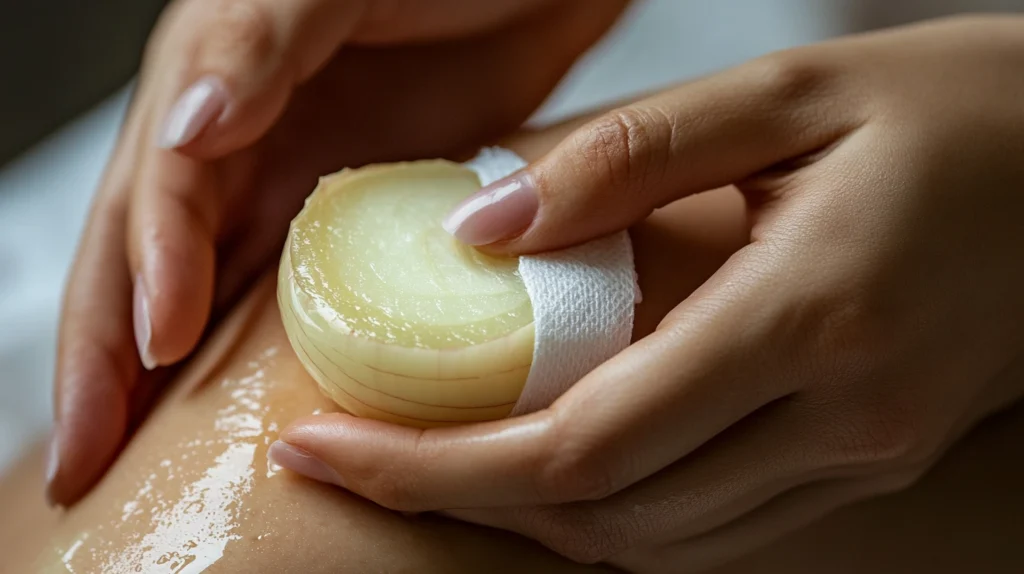
If you’re dealing with a painful, pus-filled boil and want a natural remedy, onion is one of the easiest and most accessible treatments to try. The key to success lies in how you prepare and apply it. Below are four proven methods to use onions effectively against boils.
⚠️ Important Note: Always apply onion to clean, unbroken skin. If the boil has burst, do not apply raw onion directly to the open wound — instead, consult a medical professional.
Method 1: Raw Onion Poultice
What You’ll Need:
- 1 medium-sized raw onion (red or white)
- Clean cotton cloth or gauze
- Bandage or medical tape
Steps:
- Peel and slice the onion into thick, round slices.
- Slightly crush the slice using the back of a spoon to release the juices.
- Place the onion slice directly over the boil.
- Wrap it with gauze or a clean cloth and secure it with tape.
- Leave it in place for 1 to 2 hours, then replace with a fresh slice.
- Repeat this process 3–4 times a day for best results.
Why It Works:
The heat generated by the onion opens up pores, while the sulfur-rich juice penetrates the skin to draw out pus and kill bacteria.
Method 2: Onion Juice Application
What You’ll Need:
- Half an onion
- Grater or blender
- Cheesecloth or fine strainer
- Cotton ball
Steps:
- Grate or blend the onion to form a pulp.
- Use a cheesecloth to extract the juice into a clean bowl.
- Soak a cotton ball in the juice and dab it directly on the boil.
- Let it dry naturally or cover it with gauze.
- Reapply every 3 to 4 hours, especially before bed.
Why It Works:
Onion juice is concentrated and quickly absorbed by the skin. It delivers antimicrobial compounds deeper into the infected tissues.
Method 3: Onion and Garlic Paste
What You’ll Need:
- 1 small onion
- 2 cloves of garlic
- Mortar and pestle or blender
- Clean gauze
Steps:
- Blend the onion and garlic together to form a thick paste.
- Apply a thin layer directly to the boil.
- Cover it with gauze and leave it for 30 to 60 minutes.
- Rinse gently with warm water.
- Repeat once or twice daily until the boil shrinks.
Why It Works:
Garlic enhances the antibacterial power of onion, making this combo highly effective for persistent or recurring boils.
Method 4: Onion with Turmeric and Honey
What You’ll Need:
- 1 tablespoon onion juice
- ½ teaspoon turmeric powder
- ½ teaspoon raw honey
Steps:
- Mix all ingredients into a smooth paste.
- Apply directly to the boil.
- Leave it on for 30–45 minutes.
- Rinse off gently and pat dry.
- Use this treatment once daily until results are visible.
Why It Works:
Turmeric is a powerful anti-inflammatory, and honey acts as a natural antibacterial and skin soother. Together with onion, they create a triple-action formula for faster healing.
🧼 Pro Tip: Always clean the area before and after each treatment. Use mild soap and warm water to prevent spreading the infection.
Safety Tips and Side Effects
While onion is a natural and generally safe remedy for boils, it’s still important to be aware of certain precautions to ensure you’re using it safely and effectively.
Who Should Avoid Onion Application?
Although most people tolerate onion well when applied to the skin, there are exceptions. Avoid using onion topically if:
- You have sensitive skin or known allergies to onions or sulfur-containing compounds.
- You experience severe skin conditions like eczema or psoriasis around the boil site.
- You have broken skin or the boil has burst — applying raw onion to an open wound may cause irritation or infection.
In such cases, seek advice from a dermatologist before trying onion remedies.
Possible Allergic Reactions
Some individuals may develop contact dermatitis or mild irritation after using raw onion on the skin. Watch for:
- Redness or rash
- Burning sensation
- Itchiness or stinging
If these symptoms occur, stop using the onion treatment immediately and rinse the area with cool water. You may apply aloe vera gel or a hypoallergenic moisturizer to soothe the irritation.
✅ Patch Test Tip: Before applying onion to your boil, test it on a small area of your forearm. Wait 20–30 minutes to check for any signs of reaction.
Alternative Natural Remedies for Boils
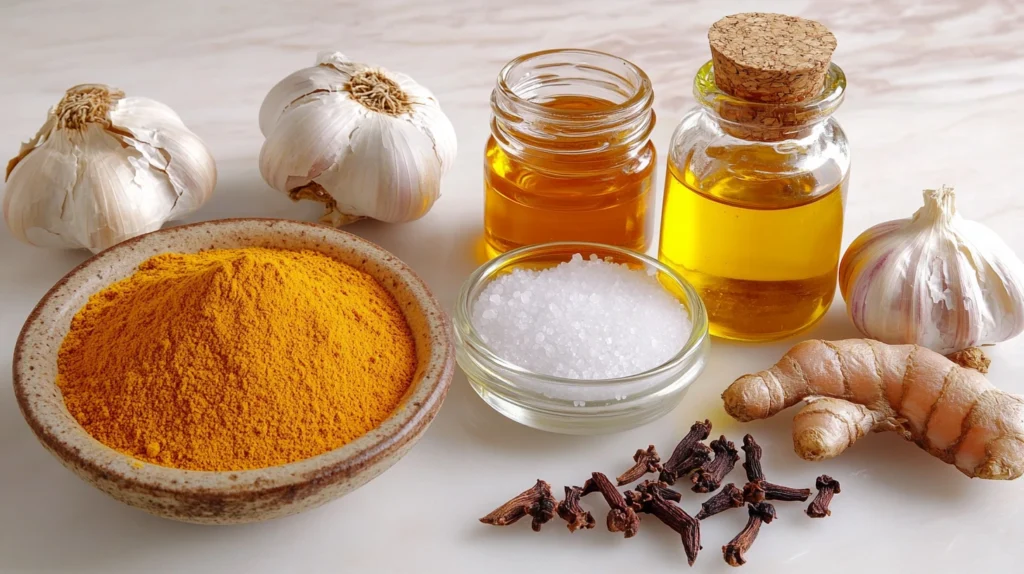
If onion isn’t your preferred option or you want to combine treatments, here are some safe and effective natural remedies you can try at home:
Turmeric Paste
Turmeric contains curcumin, a compound known for its powerful antibacterial and anti-inflammatory properties.
How to Use:
- Mix 1 teaspoon of turmeric powder with water or coconut oil to make a paste.
- Apply to the boil, cover with gauze, and leave for 30–60 minutes.
- Repeat 2–3 times daily.
Warm Compress
A warm compress is one of the simplest and most effective first-line treatments for boils.
How to Use:
- Soak a clean cloth in hot (not boiling) water.
- Apply to the boil for 10–15 minutes, 3–4 times daily.
- Helps soften the boil, increase circulation, and speed up drainage.
Tea Tree Oil
Tea tree oil is a natural antiseptic and anti-inflammatory agent. It’s potent, so always dilute it before use.
How to Use:
- Mix a few drops of tea tree oil with a carrier oil (like coconut or olive oil).
- Apply using a cotton swab directly on the boil.
- Use twice a day until the boil improves.
Epsom Salt Soaks
Epsom salt draws out toxins and reduces inflammation.
How to Use:
- Dissolve 1–2 tablespoons of Epsom salt in warm water.
- Soak a cloth in the solution and apply it to the affected area.
- Hold in place for 15 minutes, 2–3 times a day.
🌿 Combining Remedies: You can alternate between onion poultices and turmeric paste, or follow an onion treatment with a warm compress to encourage faster drainage.
When to See a Doctor
While natural remedies like onion can be extremely helpful, there are times when medical intervention is necessary. Ignoring serious signs can lead to worsening infections or complications.
Signs of Infection Spread
Seek immediate medical attention if you notice:
- Red streaks extending from the boil
- High fever or chills
- Swollen lymph nodes
- Severe pain or discomfort not relieved by home remedies
- The area around the boil becomes hard, red, and increasingly tender
These may be signs of a systemic infection that requires antibiotics or professional drainage.
Large or Multiple Boils
If you have:
- A boil larger than a golf ball
- Recurrent boils (more than 2–3 times a year)
- Clusters of boils (carbuncles)
It’s wise to consult a healthcare provider. These cases may be linked to underlying conditions like diabetes, immune issues, or MRSA (a type of antibiotic-resistant staph infection).
If the boil spreads, causes fever, or doesn’t improve with home care, consult a doctor. However, gentle, food-based remedies like onions can be the first line of defense — and they might be sitting next to your Banana Nut Muffins ingredients right now.
Frequently Asked Questions
What is an onion boil?
An onion boil usually refers to a skin boil (furuncle) treated using raw onion or onion-based remedies. Onions are rich in sulfur compounds and flavonoids like quercetin, which have natural antibacterial and anti-inflammatory properties. When applied to a skin boil, onion helps draw out pus, reduce swelling, and accelerate healing. It’s a popular remedy in traditional and holistic medicine, often used as a natural alternative to antibiotics for minor skin infections.
Are boiled onions good for you?
Yes, boiled onions are very good for you. While some nutrients may be reduced through cooking, boiled onions still retain many beneficial compounds, including:
- Fiber for digestive health
- Antioxidants for immune support
- Flavonoids like quercetin, which help lower inflammation
- Natural prebiotics that support gut flora
Eating boiled onions can help reduce blood pressure, improve cholesterol levels, and support respiratory health, especially when consumed in soups or teas.
What does drinking boiled onion water do?
Drinking boiled onion water is a traditional remedy that offers multiple health benefits:
- Relieves cough and chest congestion
- Boosts immunity due to its antiviral and antibacterial effects
- Acts as a natural detoxifier, flushing out toxins
- Reduces inflammation, particularly in the throat and respiratory system
- May help with sleep issues due to its calming effects
To make it, boil sliced onions in water for 10–15 minutes, strain, and drink warm. You can add lemon or honey for taste and extra therapeutic value.
How do you boil an onion for a cough?
To boil an onion for a cough, follow these simple steps:
- Peel and chop 1 medium red or white onion.
- Add it to 2 cups of water in a small pot.
- Boil for 10–15 minutes, uncovered.
- Strain the liquid into a cup.
- Add 1 tsp of honey and optionally, a squeeze of lemon.
Drink this twice a day to help loosen mucus, soothe your throat, and reduce coughing fits. The sulfur compounds in onions act as natural expectorants.
Does boiling onions help with colds?
Yes, boiling onions can help relieve cold symptoms. Onion contains antiviral, antibacterial, and anti-inflammatory properties that support the body’s immune system during colds. Boiled onion (as a tea or in soup) may:
- Open up blocked sinuses
- Soothe a sore throat
- Loosen mucus in the chest
- Reduce coughing and sneezing
It’s most effective when used at the first sign of a cold, paired with other immune boosters like garlic, ginger, or lemon.
What is the fastest way to cure a cough?
The fastest natural ways to cure a cough include:
- Onion and honey syrup: A powerful combo to reduce irritation and promote mucus drainage.
- Ginger tea with lemon and honey: Anti-inflammatory and soothing.
- Steam inhalation: Loosens mucus and calms the throat.
- Hydration: Drink plenty of fluids to thin mucus.
- Rest: Give your body time to heal.
In severe or persistent cases (more than 7–10 days), or if accompanied by fever or chest pain, consult a doctor.
Conclusion
Boils are not only uncomfortable but also a sign that your body is fighting an internal infection on the skin’s surface. Thankfully, nature offers a gentle yet powerful remedy in the form of the onion. Backed by both science and centuries of traditional medicine, onion boil remedies are an effective and affordable option to reduce pain, kill bacteria, and speed up recovery.
Whether you choose a raw onion slice, onion juice, or combine it with turmeric and honey, these methods can help bring relief and prevent the spread of infection — all from ingredients in your kitchen.
Just remember: not all boils can be treated at home. Stay aware of the warning signs, and don’t hesitate to consult a healthcare provider when needed.
Give onions a try, and you might be surprised at just how fast they help your skin heal naturally.
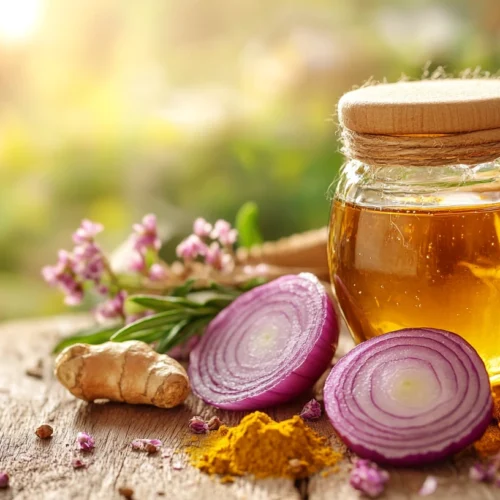
🧅 Onion Boil Remedy – Natural Skin Treatment Recipe
Equipment
- Knife
- Cutting board
- Gauze or clean cloth
- Medical tape or wrap
- Optional: blender or grater (for juice or paste method)
Ingredients
- 1 medium raw red onion or white/yellow if preferred
- Optional: 1 clove of garlic for paste variation
- Optional: ½ tsp turmeric powder and ½ tsp raw honey for advanced remedy
Instructions
- Method 1: Onion Slice Poultice
- Peel the onion and cut a thick, round slice.
- Gently crush it to release juices without breaking it apart.
- Place the slice directly over the boil.
- Wrap with gauze or clean cloth and secure with tape.
- Leave in place for 1–2 hours.
- Replace with a fresh slice 2–3 times per day until the boil drains and shrinks.
- Method 2: Onion Juice Application
- Grate or blend ½ onion.
- Extract juice using a cheesecloth or strainer.
- Soak a cotton ball and apply juice directly on the boil.
- Allow it to dry naturally or cover with gauze.
- Reapply every 3–4 hours.
- Optional Method: Onion Paste with Garlic, Turmeric & Honey
- Blend onion, garlic, turmeric, and honey into a paste.
- Apply a thin layer on the boil.
- Cover with gauze and leave for 30–45 minutes.
- Rinse gently with warm water.

